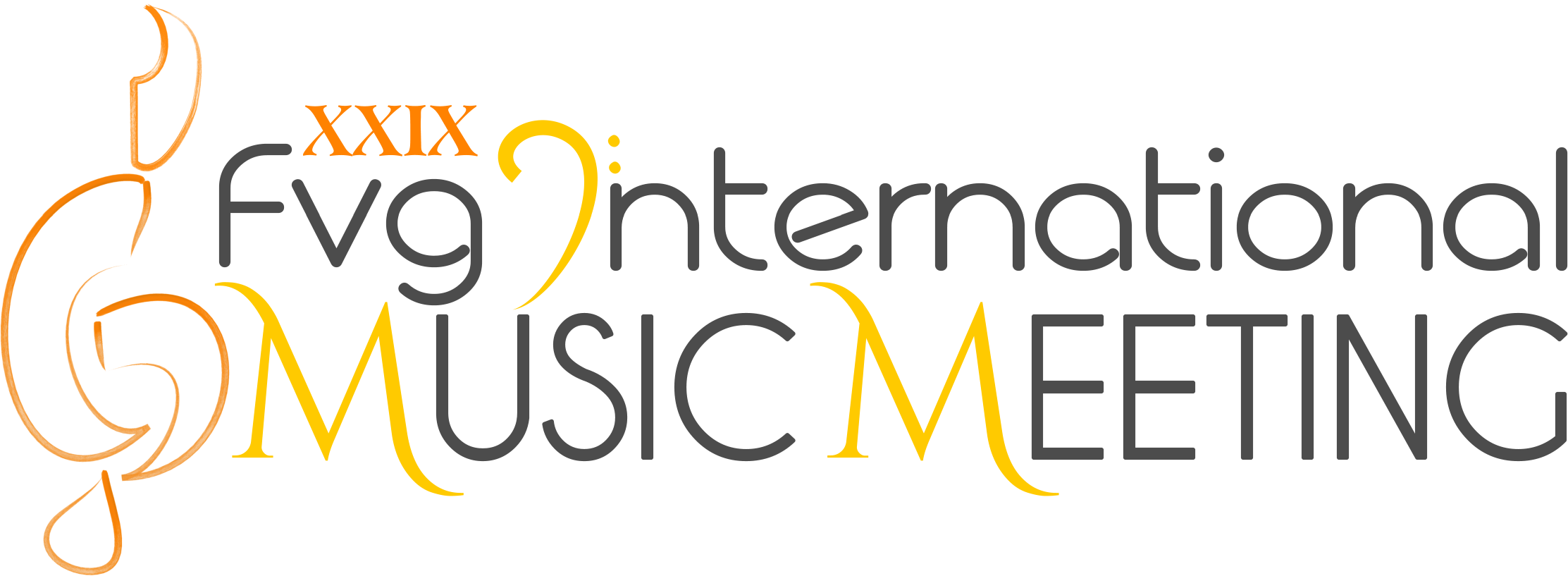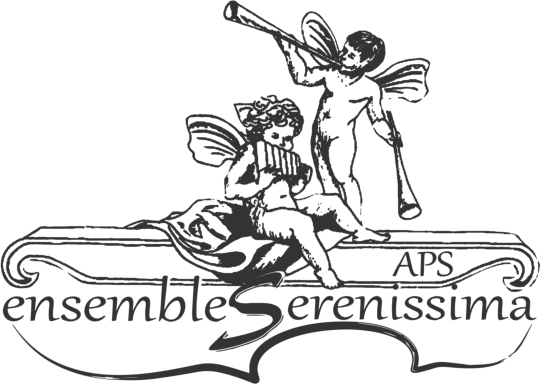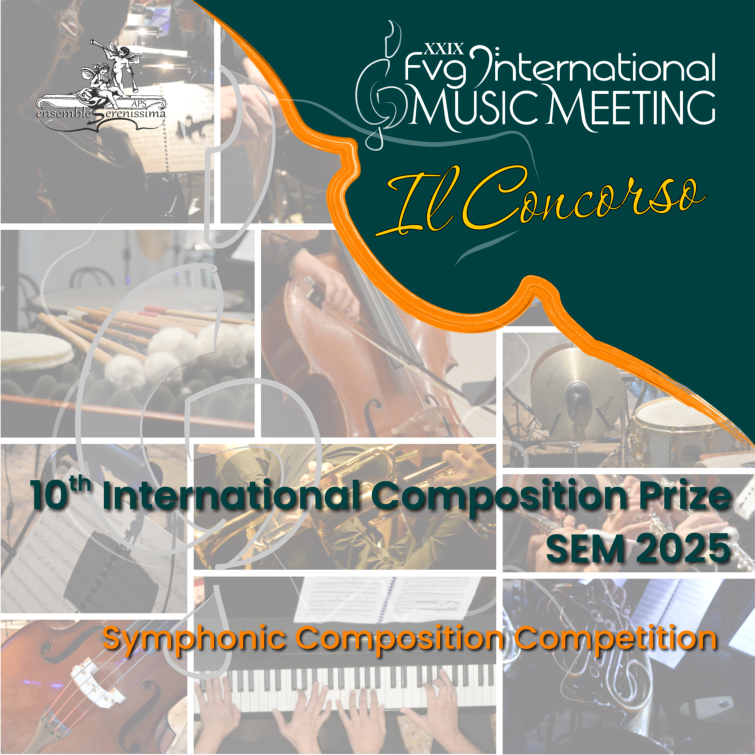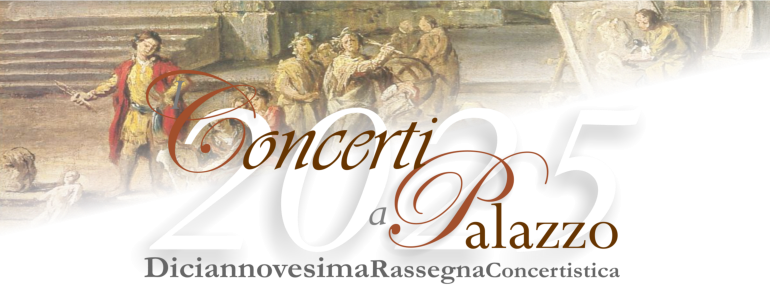ACCADEMIA MUSICALE DI SACILE
XXIX FVG International Music Meeting 2025
International Composition Prize
MENSILE LA PULCE MUSICALE
Sostienici
Cerca
 |
SACILE ESTATE MUSICALE Residenza estiva
XXIX Edizione - 2025 |
Sfoglia la brochure
|
|
MASTERCLASS LETTURA A PRIMA VISTA / SIGHT READING MASTERCLASS
Docente / Teacher: Elena Ballario
Destinatari:
Corso destinato ad allievi di Pianoforte principale, Pratica Pianistica, Pratica dell’accompagnamento, Musica da camera, Pianoforte jazz, e a tutti gli allievi pianisti e non, di tutti i livelli, interessati ad approfondire e migliorare la propria lettura.
Target audience:
Course intended for students of Principal Piano, Piano Practice, Accompaniment Practice, Chamber Music, Jazz Piano, and all piano and non-piano students of all levels interested in deepening and improving their reading. Descrizione dei contenuti:
Il corso non è basato sul prevedibile esercizio di lettura ma consiste in una approfondita metodologia che conduce ad assimilare importanti informazioni pratiche per migliorare la lettura a qualsiasi livello di conoscenza dello strumento.
Esso fornisce tecnica di base di lettura attraverso materiale specifico e applicazione di questa al repertorio di tutti i livelli.
Sarà adottata una metodologia idonea a seconda di eventuali esigenze singole. Il corso utilizzerà bibliografia specifica e materiale selezionato dalla docente.
Description of contents:
The course is not based on the predictable reading exercise but consists of an in-depth methodology that leads to assimilating important practical information to improve reading at any level of knowledge of the instrument. It provides basic reading technique through specific material and application of this to the repertoire at all levels. Appropriate methodology will be adopted according to individual needs. The course will use specific bibliography and material selected by the lecturer. A leggere a prima vista si impara e si può insegnare.
La lettura a prima vista è il primo contatto pratico con un'opera musicale. E' una dote ma anche chi è meno portato e si esercita con un criterio specifico riuscirà a raggiungere buoni risultati se non ottimi. La velocità mentale di elaborare informazioni è considerata una forte componente di predisposizione alla lettura a rima vista che richiede di esaudire molte esigenze in temo reale. E' unanimemente riconosciuto tra i pedagoghi che la capacità di leggere a prima vista sia un prezioso strumento da coltivare e possedere per i pianisti e per tutti gli strumentisti. La lettura a prima vista è l'abilità più importante e necessaria al pianoforte. L'abilità di leggere a prima vista rivela efficacemente la competenza di interpretare in modo efficiente simboli musicali e riconoscere schemi armonici, melodici e ritmici; è quindi il riflesso di una comprensione generale della musica e della sua costruzione e dovrebbe essere incoraggiata e proposta fin dalle prime lezioni di pianoforte o altro strumento musicale.
La pratica della lettura a prima vista riduce il tempo di studio e può consentire a un musicista di familiarizzare con una grande quantità di musica in un breve lasso di tempo aumentando il piacere della pratica al pianoforte per gli studenti; essa può essere quindi terapeutica, ciò utile a prevenire la monotonia dello studio e a fornire un interesse costantemente rinnovato. Essa costruisce memoria tattile, uditiva e cinetica, (memoria dei movimenti), fornisce opportunità di sviluppare tecnica, coordinazione, musicalità, caratteristiche di stile, capacità di ascolto e aumenta la sicurezza dell'esecutore.
La lettura a prima vista è anche una componente procedurale nell'apprendimento di un nuovo repertorio, gli strumentisti che suonano bene un pezzo a prima vista evitano gran parte del lavoro necessario per acquisirne la conoscenza.
Eppure, nonostante l'alto valore attribuito alla lettura a prima vista dagli insegnanti, gli studenti di pianoforte sono spesso carenti nelle abilità, mostrando un ampio divario tra il livello di lettura e la difficoltà dei brani eseguiti. E le conseguenze di un'inadeguata capacità di lettura a prima vista sono devastanti. Giles (1983) afferma: probabilmente più studenti di pianoforte di livello intermedio abbandonano lo studio del pianoforte a causa di problemi di lettura. che per qualsiasi altro motivo. Normalmente le persone non rinunciano alle attività che amano. Ma se ogni pezzo presenta una prospettiva di apprendimento da temere, il risultato è prevedibile. Non dovremmo sorprenderci che milioni di persone che "suonavano il piano", a distanza di poco tempo dopo aver interrotto gli studi non riescano a distinguere una melodia di poche note alla tastiera.
Contrariamente alla tradizionale realtà che afferma che "lettori a prima vista si nasce" è solo negli ultimi anni che la lettura a prima vista del pianoforte è uscita dal suo ruolo di sorellastra dell'esecuzione ed è un'arte che può essere insegnata. Spesso non rientra nei programmi di studio perchè il docente non conosce la metodologia, di conseguenza: la maggior parte degli studenti non legge bene a prima vista perché a pochissimi vengono offerte istruzioni specifiche per saperlo fare, esistono poche informazioni sulla verifica delle abilità di lettura e ancor meno si concentra sullo sviluppo di un piano per affrontare l'insegnamento dell'abilità. Essa dovrebbe essere praticata di pari passo con la tecnica e lo studio del repertorio fin dai primissimi anni di studio.
Il processo di pratica del repertorio che contiene anche la pratica di correggere gli errori si rivela disastroso per la lettura a prima vista perché sono abilità separate. La lettura a prima vista deve essere considerata dagli insegnanti come elemento indispensabile per la valutazione del repertorio da assegnare che in base alle capacità di lettura può diventare sempre più difficile ma in modo progressivo, questo facilita enormemente la velocità di studio e di conseguenza l’esecuzione ma è necessario che sia dedicato tempo e attenzione alla modalità e alla pratica della metodologia di lettura.
La pratica di correggere gli errori e di provare sezioni di un brano porta alla perfezione durante l'esecuzione ma si rivela disastrosa durante la lettura a prima vista perché il processo di pratica del repertorio e quello di lettura a prima vista sono separati e il successo in uno non porta al successo nell'altro. Come possiamo quindi permetterci di non insegnare la lettura a prima vista come un'abilità separata? Quando un insegnante assegna semplicemente un brano per lo studente a una lezione e lo studente esegue il brano la settimana successiva, l'insegnante non sa come lo studente si sia esercitato e quanto sia stata inizialmente difficile la sua lettura. Spesso viene poi assegnato materiale più difficile, sempre senza che il docente abbia prima valutato la capacità di lettura dello studente. Questo tipo di insegnamento è contraddittorio con l'affermazione che gli insegnanti apprezzano molto l'abilità di lettura a prima vista.
La lettura a prima vista non può essere un insegnamento casuale, gli insegnanti devono prima riconoscere che la lettura a prima vista è un'abilità separata dall'esecuzione al pianoforte e che può essere insegnata in modo efficace. ln secondo luogo, devono valutare la capacità di lettura a prima vista dei loro studenti tanto quanto la capacità di eseguire il repertorio di recital. ln altre parole, durante la lezione settimanale di pianoforte bisogna dedicare tempo e attenzione alla lettura a prima vista. ln terzo luogo è necessario che gli insegnanti forniscano allo studente un programma strutturato e molto materiale di lettura accessibile.
Per i professionisti, avere la reputazione di un forte lettore a prima vista può portare a maggiori opportunità di lavoro sia in ambito dell'accompagnatore al pianoforte che per la vastità del repertorio che si può acquisire. Essa è fondamentale anche per i non pianisti per lo studio delle parti orchestrali. Il pianista accompagnatore o li Maestro sostituto poi deve sempre leggere brani nel minor tempo possibile per sostenere la preparazione di esami audizioni o ripassare le parti con i cantanti d'opera, oppure anche nel ruolo di pianista per la danza. Il pianista che lavora nelle scuole di danza deve capire i passi che l'insegnante spiega al corpo di ballo e deve immediatamente individuare un brano adatto come ritmo, carattere e durata, variando il più possibile i brani.
Ultimamente nella didattica si tende a leggere poco, sia per mancanza di tempo che perché la musica si può ascoltare nelle incisioni o su youtube, in passato un brano per conoscerlo doveva essere letto. La capacità di leggere a prima vista al pianoforte è stata un'abilità apprezzata nel corso della storia. Leopold Mozart si vantava dell'impressionante capacità di lettura a prima vista del suo giovane figlio, e Czerny, Beethoven e Mendelssohn furono tutti elogiati per le loro dimostrazioni pubbliche di lettura a prima vista fluidità. Franz Liszt, il più rinomato per la sua abilità tecnica, era famoso anche per le sue capacità superiori di lettura a prima vista. Czerny fece fare pratica a Liszt con la lettura a prima vista per un'ora al giorno, e scrive che Liszt «diventò finalmente un così grande lettore a prima vista che era pubblicamente in grado di leggere a prima vista anche composizioni di notevole difficoltà”.
Aneddoti descrivono la capacità di Liszt di leggere a prima vista il manoscritto del Concerto per pianoforte in Sol minore di Mendelssohn op.25. Camille Saint-Saëns ha anche dimostrato una superba capacità di lettura a prima vista;si racconta che Hans von Bülow sapeva leggere a prima vista una partitura manoscritta dell'opera di Wagner, Siegfried, con precisione e musicalità impeccabili. Gli insegnanti di pianoforte di oggi possono avere difficoltà a incorporare abilità funzionali come lettura a prima vista nelle lezioni mentre si concentrano sulla preparazione di recital, concorsi e audizioni, ma è importante che gli attuali insegnanti di pianoforte promuovano lo sviluppo di capacità di lettura a prima vista con tutti i loro studenti. Musica da camera a prima vista e pianoforte duettare con amici e familiari non è più un'attività banale come lo era nel XVIII e XIX secolo. Ne consegue che l'insegnante di pianoforte dovrebbe integrare le lezioni settimanali con pratica di lettura estemporanea.
Reading at first sight can be learned and taught.
Reading at first sight is the first practical contact with a musical work. It is a skill but even those who are less gifted and practise with a specific criterion will achieve good if not excellent results. Mental speed to process information is considered a strong component of aptitude for sight-reading that requires one to fulfil many demands in real time. It is unanimously recognised among pedagogues that the ability to read at sight is a valuable tool for pianists and all instrumentalists to cultivate and possess. Reading at first sight is the most important and necessary skill for the piano. The ability to read at first sight effectively reveals the competence to efficiently interpret musical symbols and recognise harmonic, melodic and rhythmic patterns; it is therefore a reflection of a general understanding of music and its construction and should be encouraged and offered from the earliest lessons of piano or other musical instrument. The practice of sight-reading reduces study time and can allow a musician to become familiar with a large amount of music in a short period of time, increasing the enjoyment of piano practice for students; it can therefore be therapeutic, which helps to prevent monotony of study and provide a constantly renewed interest. It builds tactile, auditory and kinetic memory, (memory of movements), provides opportunities to develop technique, coordination, musicality, style characteristics, listening skills and increases the performer's confidence.
Reading at first sight is also a procedural component in learning a new repertoire; instrumentalists who play a piece well at first sight avoid much of the work required to acquire knowledge of it.
Yet, despite the high value placed on sight-reading by teachers, piano students are often deficient in the skills, showing a wide gap between reading level and the difficulty of the pieces performed. And the consequences of inadequate sight-reading skills are devastating. Giles (1983) states: probably more intermediate piano students drop out of piano study because of reading problems. than for any other reason. Normally, people do not give up activities they love. But if each piece presents a learning prospect to be feared, the result is predictable. We should not be surprised that millions of people who used to ‘play the piano’, shortly after discontinuing their studies cannot distinguish a melody of a few notes on the keyboard.
Contrary to the traditional reality that states that ‘one is born a sight-reader’, it is only in recent years that piano sight-reading has emerged from its role as a performance sibling and is an art that can be taught. Often it is not part of the curriculum because the teacher does not know the methodology, as a result: most students do not read at first sight well because very few are offered specific instruction in how to do so, little information exists on testing reading skills, and even less focus is placed on developing a plan to address the teaching of the skill. It should be practised in tandem with technique and repertoire study from the earliest years of study.
The process of repertoire practice that also contains the practice of correcting errors proves disastrous for sight-reading because they are separate skills. Reading at first sight must be considered by teachers as an indispensable element for the evaluation of the repertoire to be assigned, which according to reading ability can become increasingly difficult but in a progressive manner, this greatly facilitates the speed of study and consequently the performance but it is necessary that time and attention be devoted to the method and practice of reading methodology.
The practice of correcting mistakes and rehearsing sections of a piece leads to perfection during performance but proves disastrous during sight-reading because the process of repertoire practice and sight-reading are separate and success in one does not lead to success in the other. So how can we afford not to teach sight-reading as a separate skill? When a teacher simply assigns a piece for the student to play in one lesson and the student performs the piece the following week, the teacher does not know how the student practised and how difficult his or her reading was initially. Often more difficult material is then assigned, again without the teacher having first assessed the student's reading ability. This type of teaching is contradictory to the claim that teachers value reading ability at first sight.
Sight-reading cannot be a casual teaching; teachers must first recognise that sight-reading is a separate skill from piano performance and that it can be taught effectively. ln the second place, they must assess their students' ability to read at first sight as much as their ability to perform recital repertoire. ln other words, time and attention must be devoted to sight-reading during the weekly piano lesson. ln the third place, teachers must provide the student with a structured syllabus and plenty of accessible reading material.
For professionals, having a reputation as a strong sight-reader can lead to greater job opportunities both in the field of piano accompaniment and for the breadth of repertoire that can be acquired. It is also essential for non-pianists to study orchestral parts. The piano accompanist or substitute maestro then always has to read pieces in the shortest possible time to prepare for auditions or review parts with opera singers, or even in the role of pianist for dance. The pianist working in dance schools must understand the steps that the teacher explains to the corps de ballet and must immediately identify a suitable piece in terms of rhythm, character and duration, varying the pieces as much as possible.
Lately there is little tendency in education to read, either due to lack of time or because music can be heard in recordings or on youtube, in the past a piece had to be read in order to know it. The ability to read at first sight on the piano has been an appreciated skill throughout history. Leopold Mozart boasted of his young son's impressive ability to read at first sight, and Czerny, Beethoven and Mendelssohn were all praised for their public demonstrations of reading at first sight fluency. Franz Liszt, most renowned for his technical prowess, was also famous for his superior sight-reading skills. Czerny had Liszt practise sight-reading for an hour a day, and writes that Liszt ‘finally became such a great sight-reader that he was publicly able to read at first sight even compositions of considerable difficulty’.
Anecdotes describe Liszt's ability to read at first sight the manuscript of Mendelssohn's Piano Concerto in G minor op.25. Camille Saint-Saëns also demonstrated a superb ability to read at first sight; it is said that Hans von Bülow could read at first sight a manuscript score of Wagner's opera, Siegfried, with impeccable accuracy and musicality. Today's piano teachers may find it difficult to incorporate functional skills such as sight-reading into lessons as they focus on preparing for recitals, competitions and auditions, but it is important that today's piano teachers promote the development of sight-reading skills with all their students. Chamber music at first sight and piano duets with friends and family is no longer a trivial activity as it was in the 18th and 19th centuries. It follows that the piano teacher should supplement weekly lessons with impromptu reading practice.
|
Video Ensemble Serenissima
|
60 SECONDI per scoprire chi siamo
Video sulle attività dell'Associazione Ensemble Serenissima
|
Ricevi le newsletter
INTERNATIONAL COMPOSITION PRIZE SEM 2024
|
Scadenza: 30 aprile 2025
Deadline: April 30th, 2025
|




